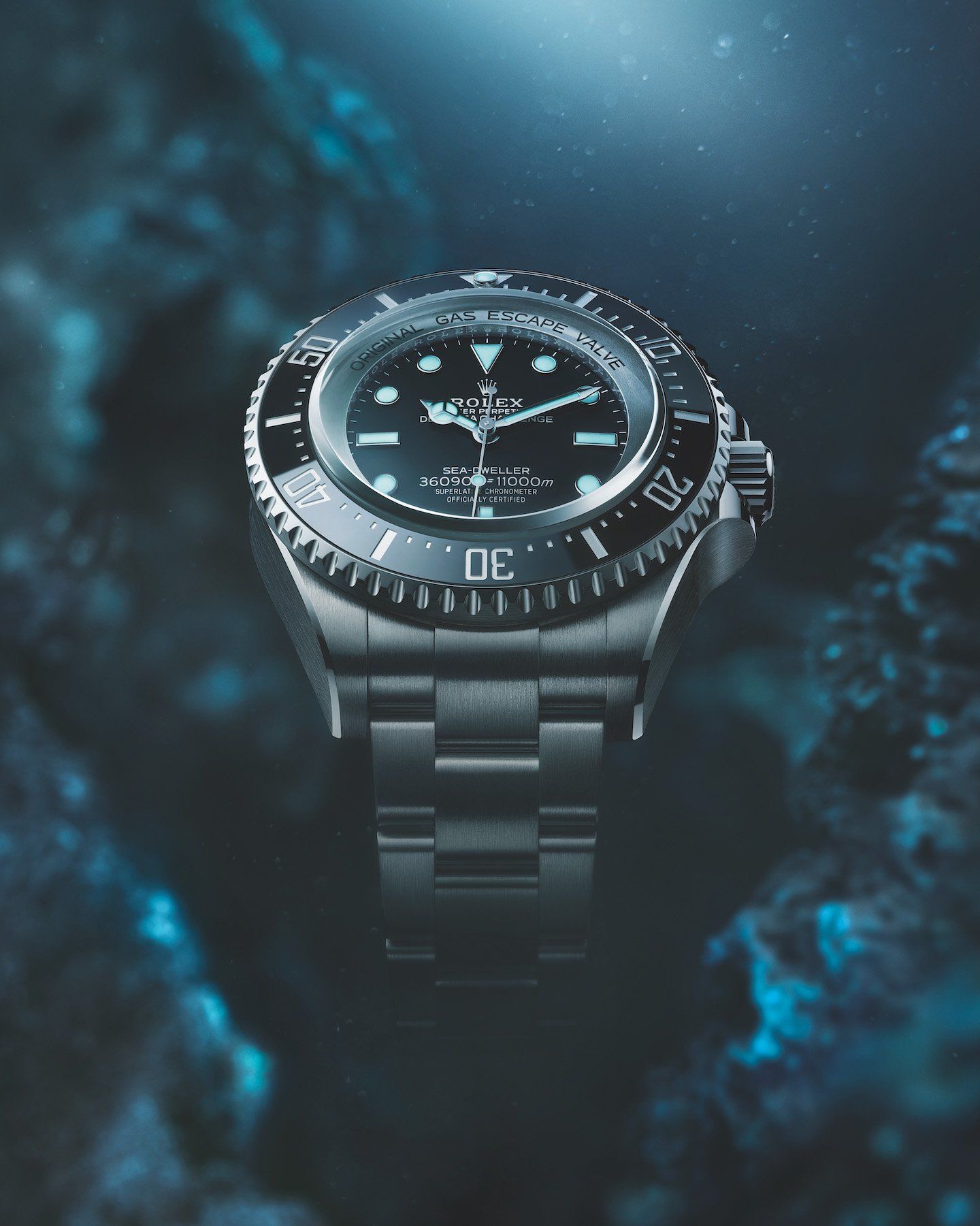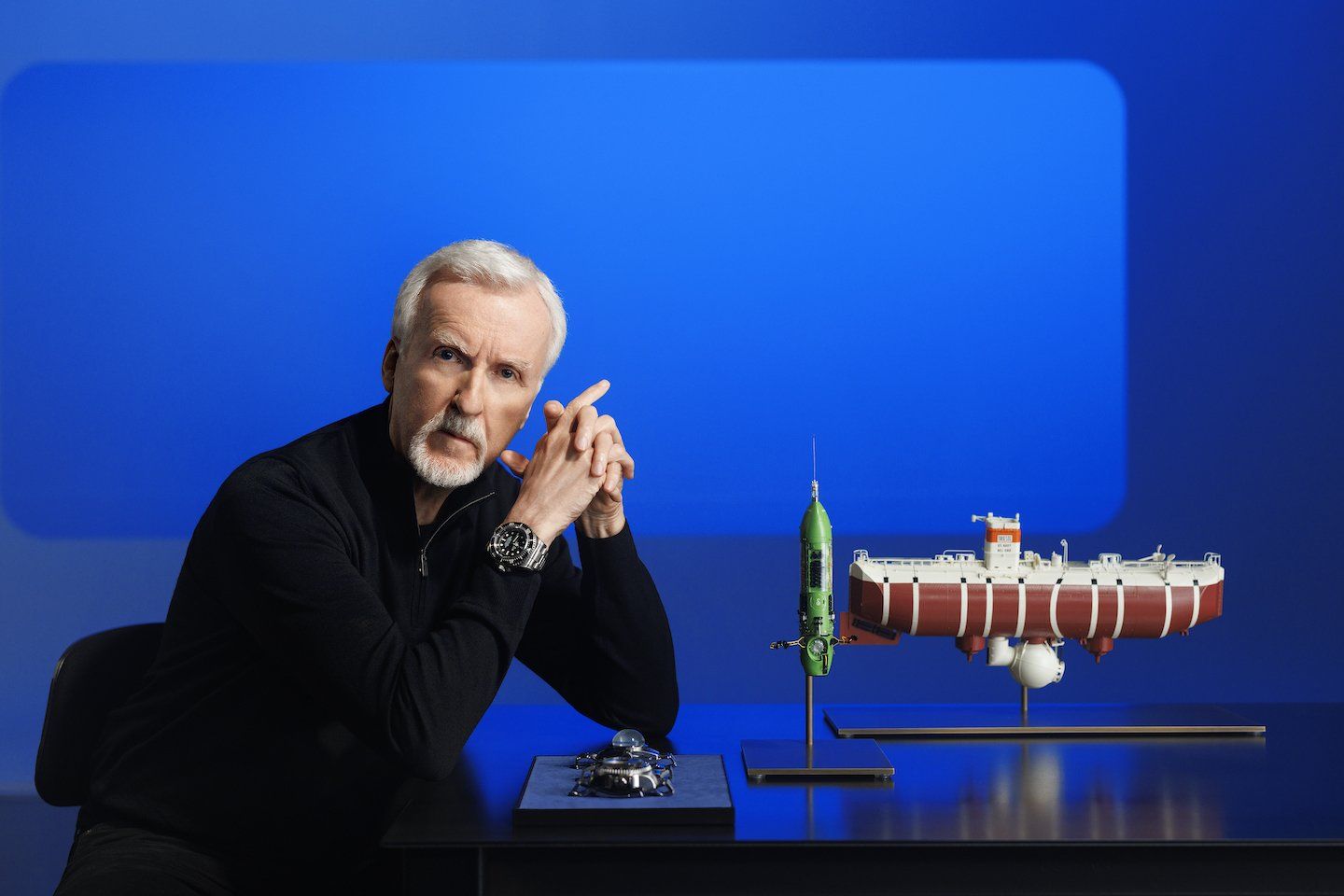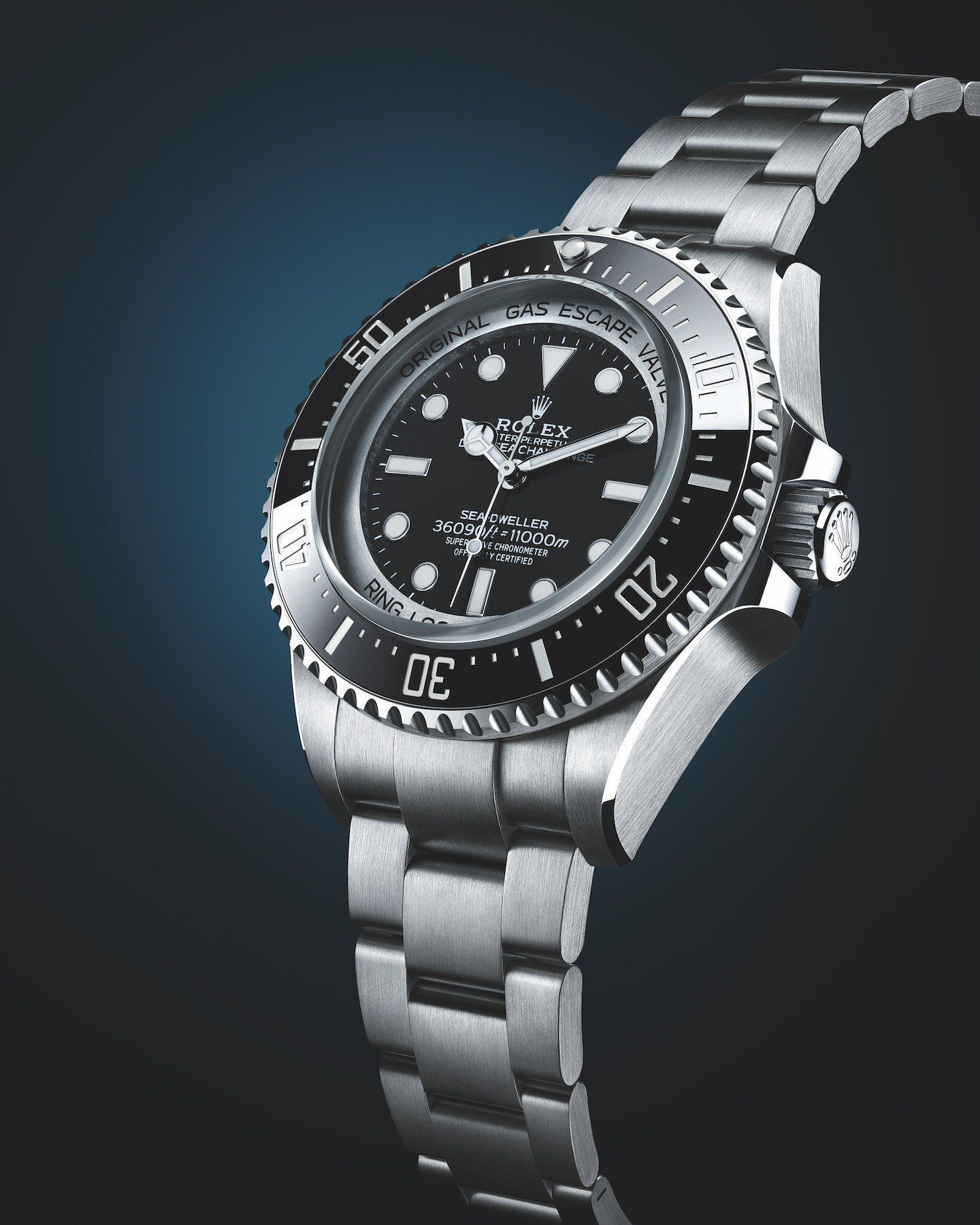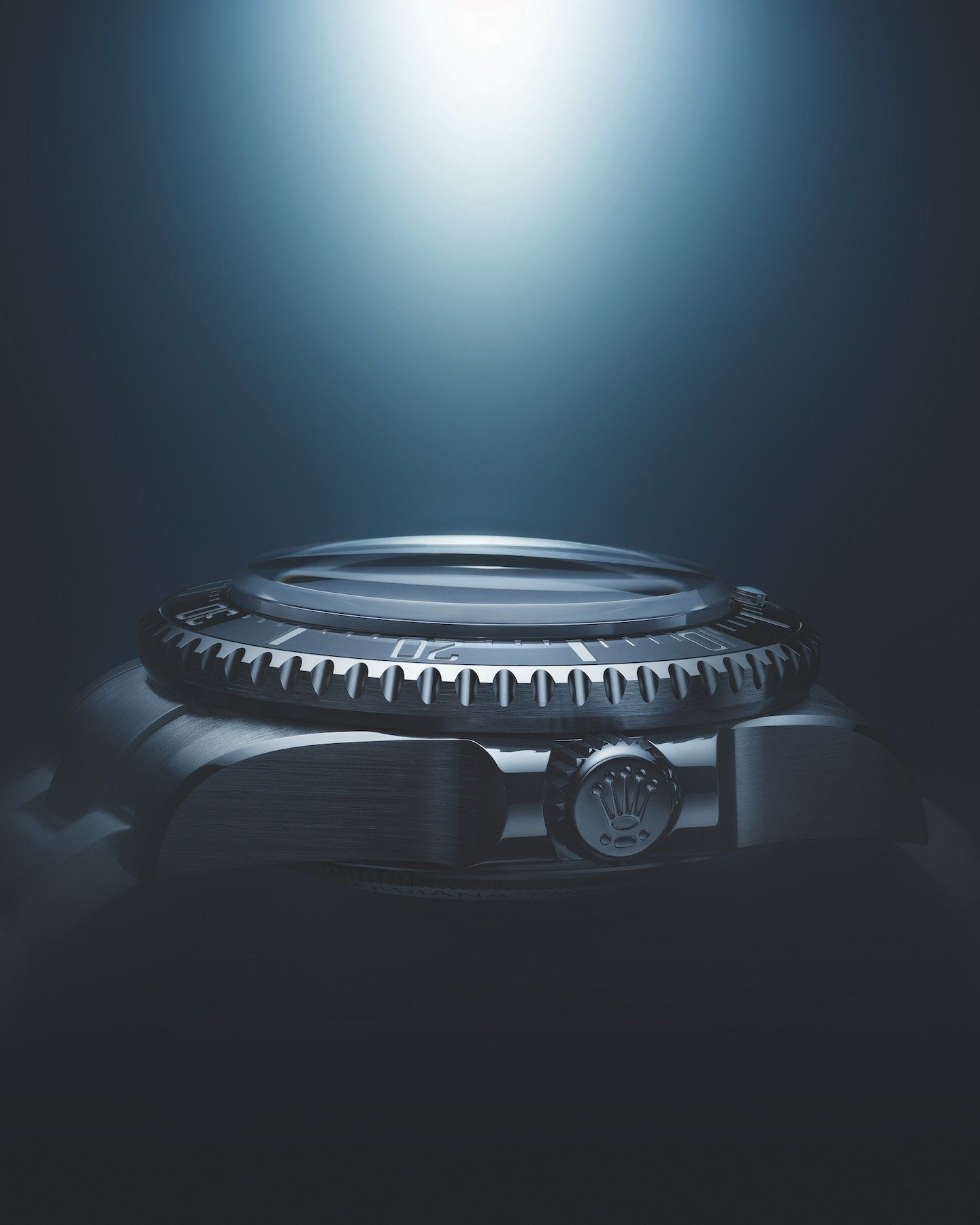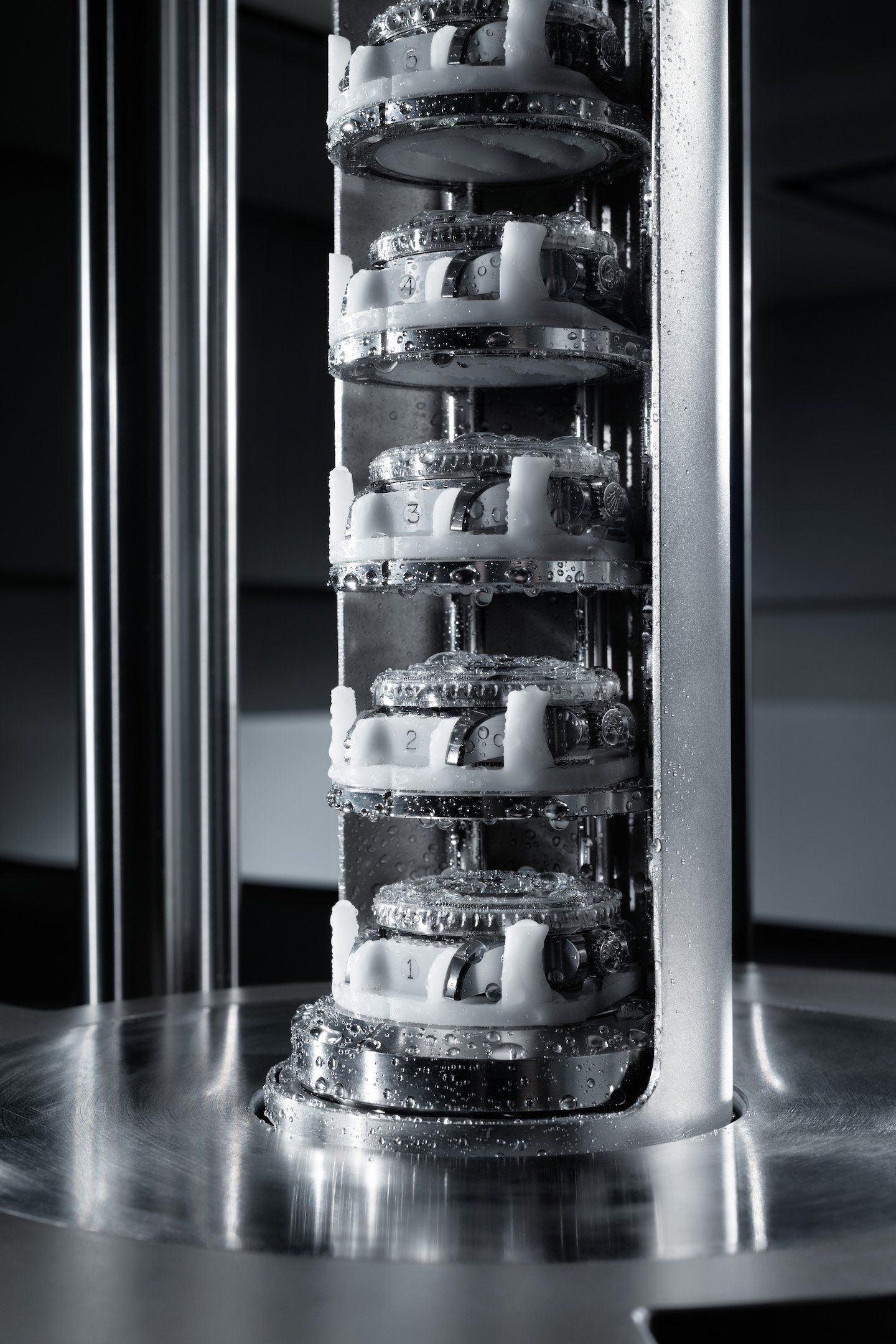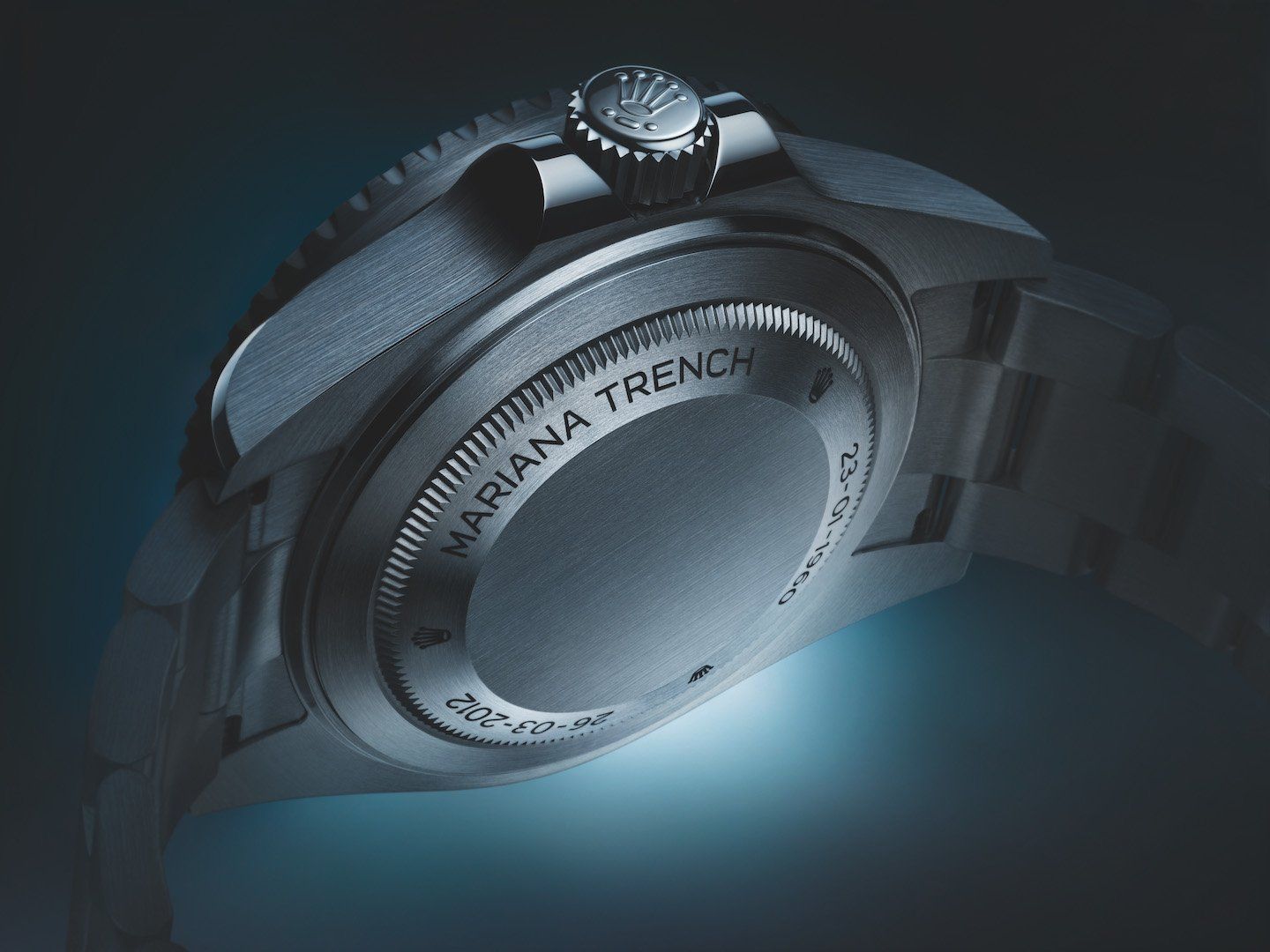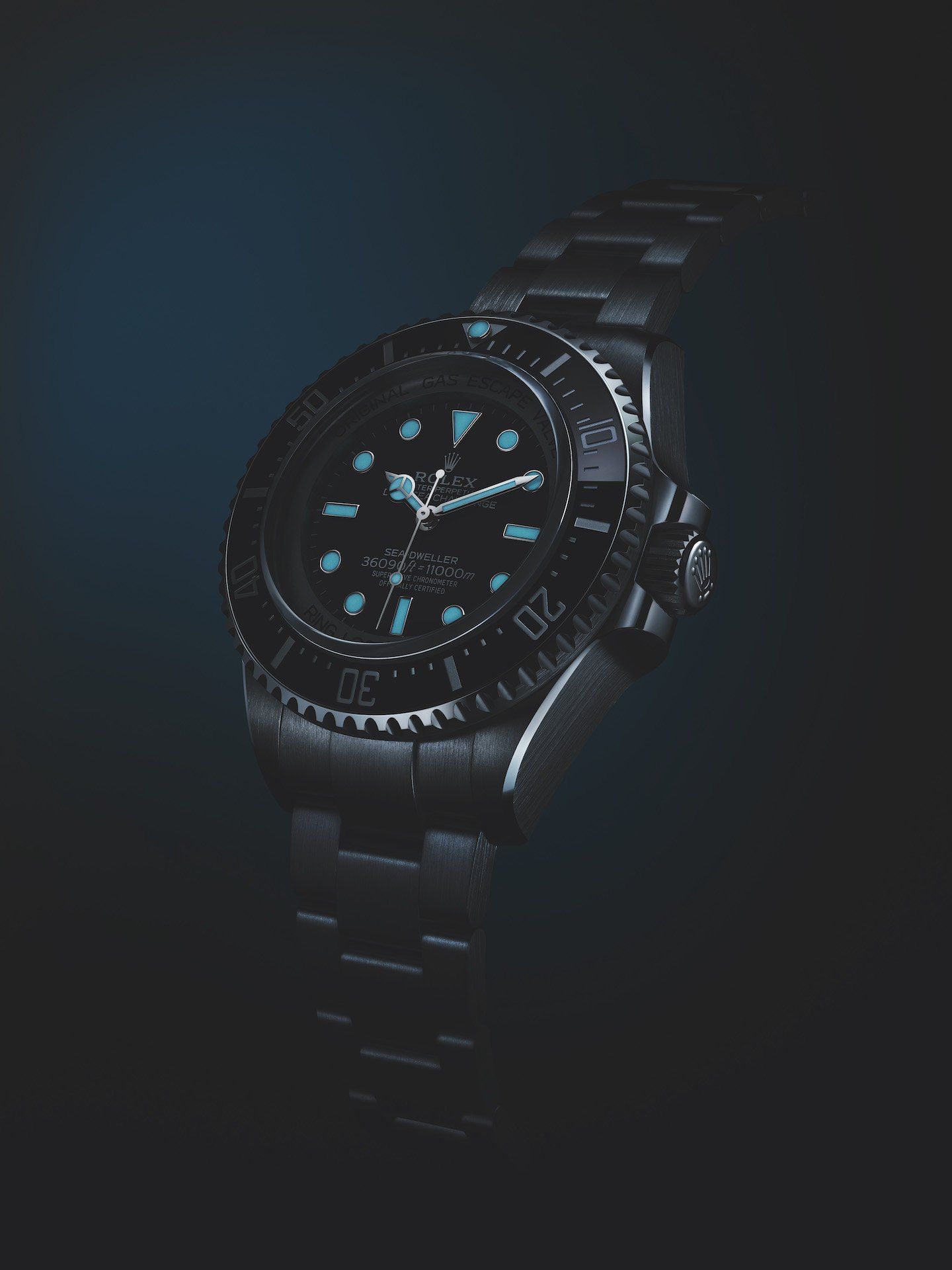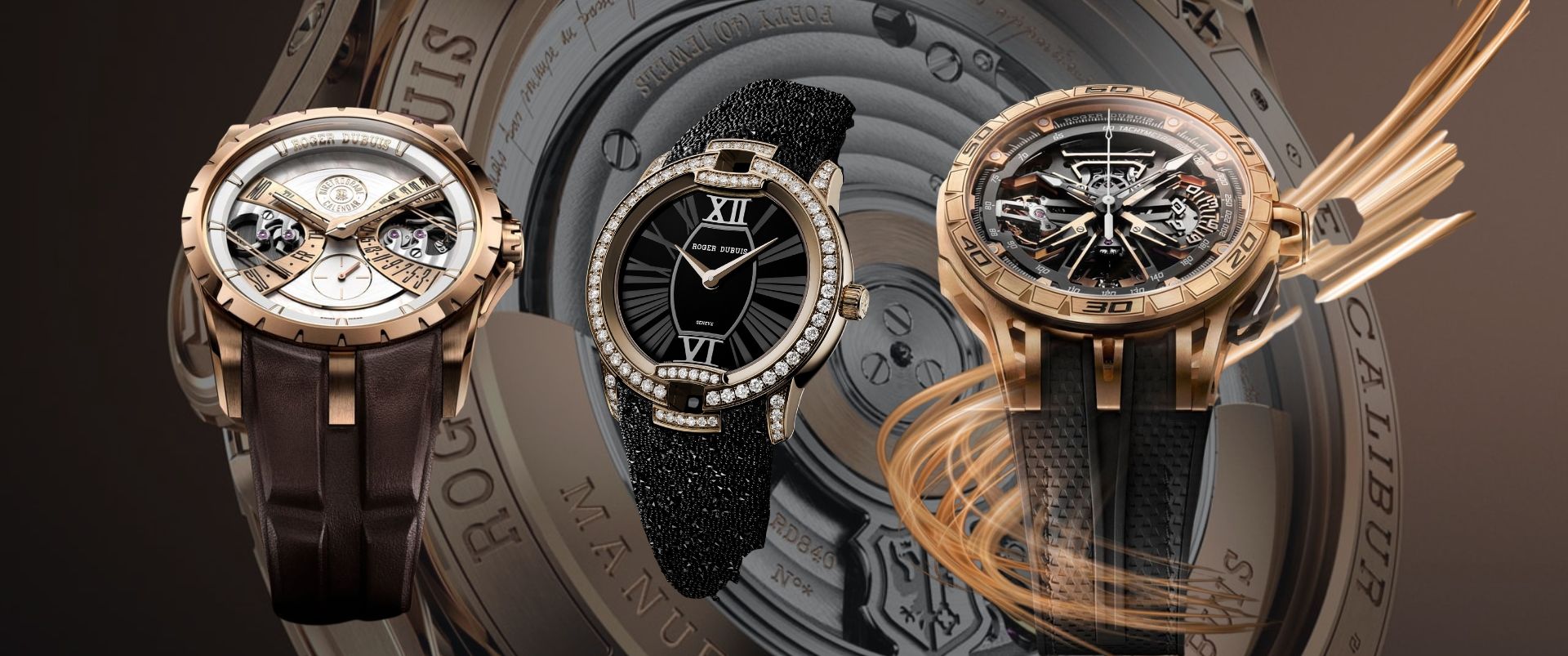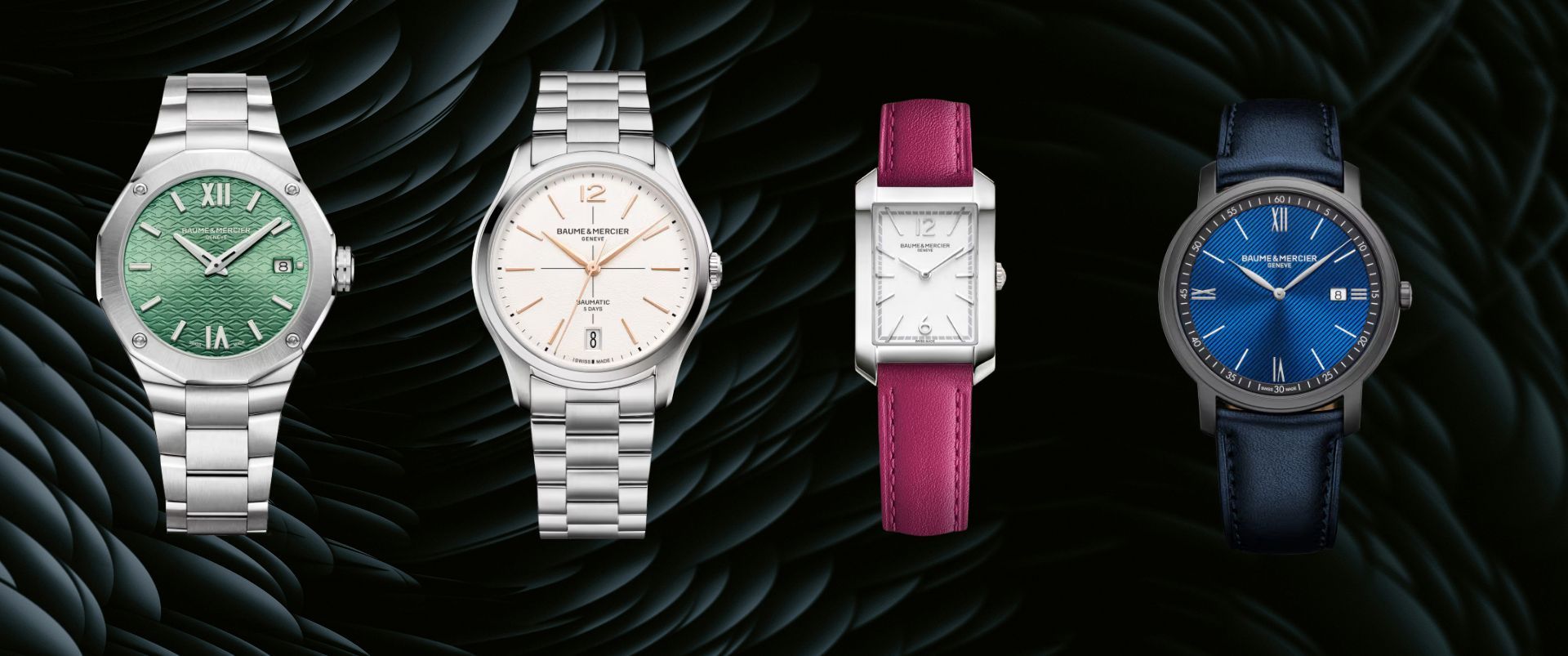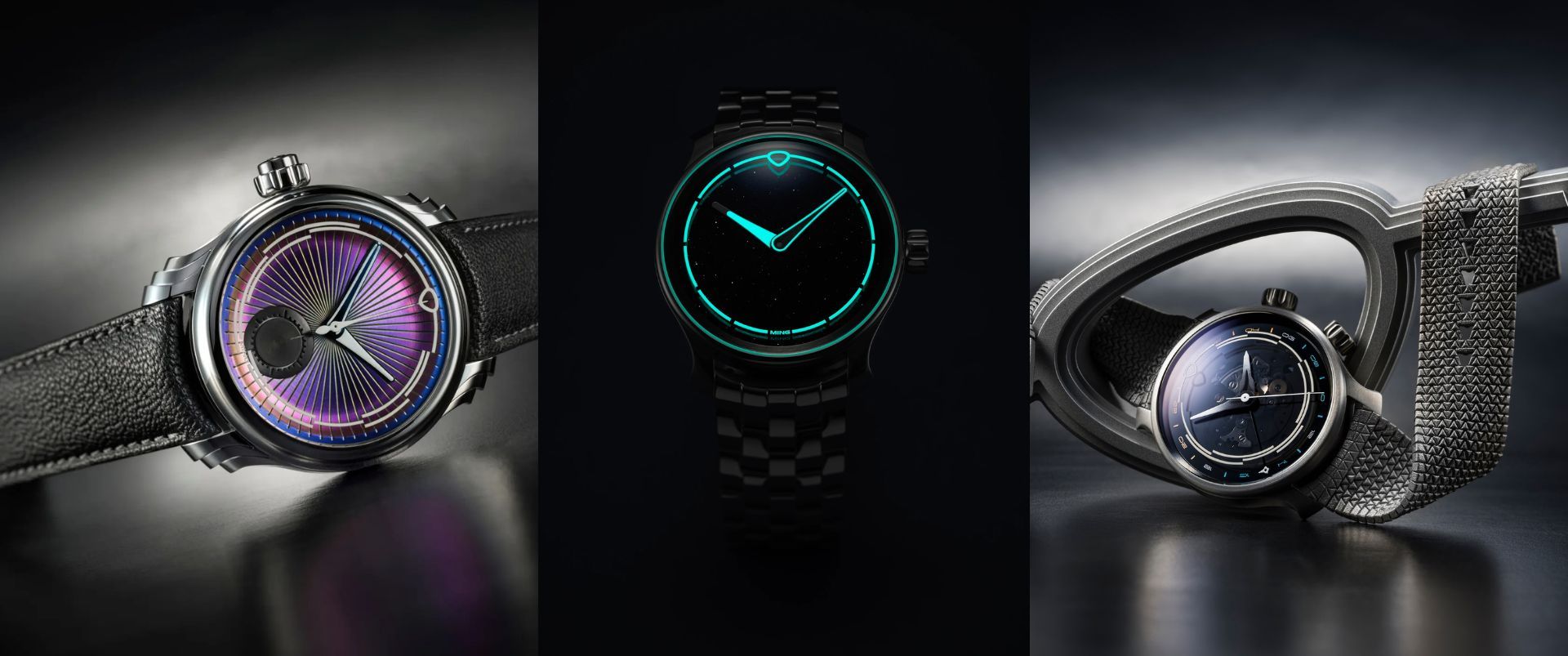Rolex Deepsea Challenge: An Experimental Watch Turns Into A Desirable Underwater Tool
The Deepsea Challenge is a diver with unparalleled credentials, built to withstand tremendous pressure and the ultimate watch of the depths. There were significant difficulties in watchmaking and production that necessitated many studies over many years to resolve.
Much before the Ultra Deep, this timepiece has moved watch enthusiasts. At that time only two models were made: one for James Cameron and the other retained by the Rolex museum. A watch enthusiast claims that this watch was what made him want Rolex and if allocated, he might even cry!
Creating Exceptional Divers’ Watch
The Deepsea Challenge is a wristwatch, as opposed to the 2012 experiment in which a watch was linked to the manipulator arm of James Cameron's submersible. This 50 mm watch was designed from the ground up with practicality in mind, starting with the case and ending with the strap. Rolex's choice of grade 5 titanium alloy RLX titanium allowed for this impressive timepiece. The new watch is 30% lighter than the 2012 prototype because of this durable and especially light metal.
Adjustments were made, such as reducing the thickness of the crystal, to provide a watch with more pleasing and user-friendly proportions. The Deepsea Challenge stands out from the other Professional watches due to the graininess of its satin surface and the shine of its lugs. The watch may be worn over a diving suit of up to 7 mm in thickness thanks to the bracelet's extension systems, the Rolex Glidelock, and the Fliplock extension link.
Why, therefore, would anyone want a watch that is so large that it exceeds yet another limit—that of wearability—so that they can almost triple a capacity that they would never actually get to enjoy in practice?
The new timepiece represents an unfinished piece of Rolex's puzzle. It's based on the watch that went to the depths with Cameron, making something that had been in the lab for 60 years available to the public. That's just about the best demonstration of engineering skills possible.
All of Rolex's know-how in creating divers' timepieces is represented in the Deepsea Challenge. It features all of the brand's major innovations, developed over a long period of time: the Ringlock system, a patented case architecture that allows the watch to withstand extreme pressure; the helium escape valve, which allows surplus gas to escape from the watch during a diver's decompression phase in a hyperbaric chamber, reducing the pressure inside the case that could otherwise damage the watch; the Triplock crown, with three sealed zones; and the Chromalight display.
Rolex isn't satisfied with just being the deepest-traveled watch, though; it also wants to be the deepest-capable watch. However, the inherent creative pressure of such rivalry is what ultimately advances manufacturing processes.
With the help of Comex (Compagnie Maritime d'Expertises), Rolex created a special ultra-high-pressure tank that can simulate the pressure of water at a depth of 13,750 meters, ensuring that each Deepsea Challenge is completely watertight (45,112 feet).
Caliber 3230, a Rolex-made movement, is housed inside the water-resistant Oyster casing. This self-winding movement is a technological tour de force, with various unique components such as the Chronergy escapement, the Parachrom hairspring (which is resistant to magnetic fields), and the Paraflex shock absorbers. The power reserve for the caliber 3230 is around 70 hours, because of its barrel design and the high efficiency of the escapement. The Deepsea Challenge, like other Rolex watches, is certified as a Superlative Chronometer and has a daily variation of fewer than two seconds.
A Tribute To The Explorers Of The Abyss
Two historic dives into the Mariana Trench have been commemorated on the case back of the Deepsea Challenge: the 1960 dive by oceanographer Jacques Piccard and U.S. Navy Lieutenant Don Walsh aboard the Trieste and James Cameron's 2012 solo descent in DEEPSEA CHALLENGE. During both missions, members wore prototype Rolex timepieces.
The firm was faced with a significant challenge in a short amount of time to develop the watch that accompanied James Cameron's dive. The Rolex teams' vast experience in the field of deep-sea divers' watches allowed for its rapid development; the watch was tested to survive a depth of 15,000 meters (49,200 feet) and 17 tonnes of pressure on the crystal. The experimental watch performed flawlessly under extreme pressure for the whole seven-hour dive, of which three hours were spent at the bottom filming and collecting samples, just as the watch from 1960 had done.
THE URGE FOR WATER-RESISTANCE
Waterproofing has always been an integral part of Rolex's watchmaking skill. The Oyster case, with its screwed-down bezel, case back, and winding crown against the central case, was introduced in 1926. Rolex has been working on improving the security of their watches for nearly a century, resulting in the Twinlock and Triplock crowns as well as the Ringlock mechanism.
The Submariner was introduced by Rolex in 1953, catering to the needs of experienced scuba divers with a water resistance of 100 meters (330 feet) and then 300 meters (1,000 feet). The Sea-Dweller was introduced in 1967; it was a diver's watch with an automatic helium release valve and a water resistance of 610 and later 1,220 meters (4,000 feet). In 2008, Rolex debuted the Deepsea, a watch that is up to the task of withstanding the harsh conditions seen at great depths. It has a Ringlock system that allows it to withstand pressure at 3,900 meters (12,800 feet). As new worlds emerge at greater depths, the Oyster Perpetual Deepsea Challenge, watertight to a depth of 11,000 meters (36,090 feet), is ready to accompany you.
The Deepsea Challenge is a significant step forward in the collaborative human and technological journey between Rolex engineers and deep-sea explorers.
Price : ₹ 1,984,000
No articles found

